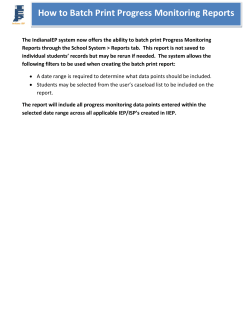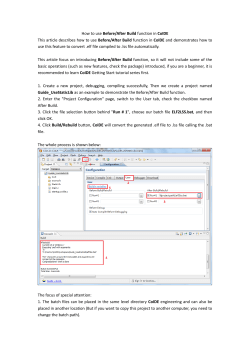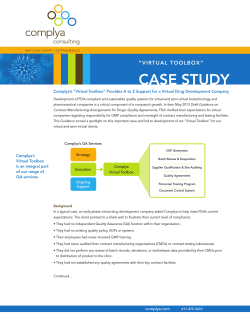
Visualize the Things Scala Days SF 2015 @mighdoll lee
Sparkle
Visualize the Things Scala Days SF 2015
@mighdoll
lee@nestlabs.com
About Me
Nest, Google, Typesafe. (opinions are my own)
Apple, General Magic, Twitter, WebTV,
Microsoft, a few other startups
Scala fan
Today
1. Intro to sparkle
2. Performance & scaling with streams
3. Live layer and data architecture
Bonus: demos, development tips, Q&A
Sparkle
Tool for easily making zooming graphs
Platform for custom visualizations on live data
● Built on streams
● Big data, low latency
https://github.com/mighdoll/sparkle
Loaders
Fast Storage
API
Transform
Stream
Display
Loading Data
● Several inputs, easy to add more
○
○
○
○
Loaders
Files and directories (.csv / .tsv)
Kafka / Avro
HDFS bulk (*)
netcat (*)
● Loaders support subscribe/notify
Loaders
Fast Storage
API
Transform
Stream
Display
Sparkle data model
Column oriented store
Immutable data model
Fast Storage
● Cassandra
● RamStore
Loaders
Fast Storage
API
Transform
Stream
Display
Select and Transform
Select &
Transform
Select columns
Apply standard transforms
● Aggregation
● Time Aggregation
Extend with custom transforms
Fast
Loaders
Fast Storage
API
Transform
Stream
Display
Sparkle Protocol
Stream
●
●
●
●
●
Generic visualization protocol
Designed for (Web)Sockets
HTTP access too (no streaming)
json encoded
Documented
Loaders
Fast Storage
API
Transform
Stream
Display
Javascript Client
●
●
●
●
Display
built on d3
start with declarative javascript
easy to customize / extend
uses server api
○ (or standalone)
Simple Demo
quick graph of .tsv plot from command line
Simple Demo
Code for basic graph
var charts = [ {
title: "90th Percentile Request Time",
groups: [ {
label: "seconds",
axis: sideAxis(),
named: [ { name: "epochs/p90" } ]
} ]
}];
Performance
Asynchronous Streams of Arrays
Perf Study: Read API
Loaders Fast Storage
API
Transform
Stream
Display
Phase I: Optimize Later
class Event[K, V](key: K, value: V)
def read(): Seq[Event[K, V]]
● Easiest to understand, use, implement
Tip: Perf Approach
1. Add measurements directly in the code
○ repeat single flow: end to end, major components
○ Async? measure synchronous portions and sum
2. Confirm/detail w/CPU profiling (YourKit)
3. Test throughput and latency under load
4. Review GC logs (Censum)
Graph to review perf numbers
GC / CPU utilization
E
k
v
E
k
v
E
k
v
E
E
k
E
E
v
v
k
E
k
v
k
v
k
k
v
E
k
E
v
v
DataArray - Saves Heap
vvvvvvvvvvvvvvvvvvvvvv
DataArray
kkkkkkkkkkkkkkkkkkkkkk
● Arrays of primitives
● High density jvm storage
● Cache locality
Phase II: Array Blocks
class DataArray[K: TypeTag, V: TypeTag]
( keys: Array[K], values: Array[V] )
def read(): DataArray[K, V]
Are we done yet?
Dense arrays mean less garbage
Tighter loops, more CPU cache efficient
Latency
Fetch
Start
Crunch
Serve
End
Overlap Pipeline Stages?
Fetch
Crunch
Serve
Start
End
Consider Throughput
Fetch
Crunch
Fetch
Serve
Crunch
Fetch
Serve
Crunch
Fetch
Crunch
Fetch
Serve
Serve
Crunch
Serve
Throughput: Memory
Fetch
Crunch
kkkkkkkkkkkkkkkkkkkkkk
vvvvvvvvvvvvvvvvvvvvvv
Serve
Generational Hypothesis
Collectable
Garbage
New Gen
Collection
Age of Object
Throughput: Memory
Fetch
Crunch
kkkkkkkkkkkkkkkkkkkkkk
vvvvvvvvvvvvvvvvvvvvvv
New Gen
Collection
Serve
Throughput: Memory
Fetch
Crunch
Serve
kkkkkkkkkkkkkkkkkkkkkk
vvvvvvvvvvvvvvvvvvvvvv
kkkkkkkkkkkkkkkkkkkkkk
vvvvvvvvvvvvvvvvvvvvvv
kkkkkkkkkkkkkkkkkkkkkk
vvvvvvvvvvvvvvvvvvvvvv
kkkkkkkkkkkkkkkkkkkkkk
vvvvvvvvvvvvvvvvvvvvvv
kkkkkkkkkkkkkkkkkkkkkk
vvvvvvvvvvvvvvvvvvvvvv
New Gen
Collection
JVM Heap
Survivor
New
Old
Survivor
Throughput: Memory
Fetch
Crunch
Serve
kkkkkkkkkkkkkkkkkkkkkk
vvvvvvvvvvvvvvvvvvvvvv
kkkkkkkkkkkkkkkkkkkkkk
vvvvvvvvvvvvvvvvvvvvvv
kkkkkkkkkkkkkkkkkkkkkk
vvvvvvvvvvvvvvvvvvvvvv
kkkkkkkkkkkkkkkkkkkkkk
vvvvvvvvvvvvvvvvvvvvvv
kkkkkkkkkkkkkkkkkkkkkk
vvvvvvvvvvvvvvvvvvvvvv
New Gen
Collection
kkkkkkkkkkkkkkkkkkkkkk
vvvvvvvvvvvvvvvvvvvvvv
kkkkkkkkkkkkkkkkkkkkkk
vvvvvvvvvvvvvvvvvvvvvv
kkkkkkkkkkkkkkkkkkkkkk
vvvvvvvvvvvvvvvvvvvvvv
kkkkkkkkkkkkkkkkkkkkkk
vvvvvvvvvvvvvvvvvvvvvv
kkkkkkkkkkkkkkkkkkkkkk
vvvvvvvvvvvvvvvvvvvvvv
Live Set
Solution: Break Big Arrays
Fetch
Crunch
kkk kkk kkk kkk kkk
vvv vvv vvv vvv vvv
kkk kkk kkk kkk kkk
vvv vvv vvv vvv vvv
Serve
kkk
vvv
kkk
vvv
kkk kkk kkk kkk kkk
vvv vvv vvv vvv vvv
kkk kkk kkk kkk kkk
vvv vvv vvv vvv vvv
kkk kkk kkk kkk kkk
vvv vvv vvv vvv vvv
New Gen
Collection
kkk
vvv
kkk
vvv
Live Set
Phase III: Async Blocks
class DataStream[K: TypeTag, V: TypeTag]
( data: Observable[DataArray[K, V]] )
def read(): DataStream[K, V]
Go Reactive: save GC
Be more responsive, timely
● Reason enough to go reactive.
Another reason: reduce GC pressure.
● Transient working set is key for throughput
More Blocks
and more Streams
Blocks for Streaming Layer
Kafka is already block streaming internally
Encode your data block-wise anyway
● Encode/decode is more efficient
● Sets the stage for downstream consumers
Blocks for Cassandra
Partition-aligned CQL write batches
● 10x write throughput
Store 1K blocks instead of (62) elements
● 10x write throughput
● 4x read throughput
Stream to Graphing Client
Overlap client processing / communication
● Lowers end to end latency
● Display starts sooner
● Enables live / progressive updates
StreamRequest
Request
Client
Server
StreamControl
Request
Streams
Update
Update
Update
Update
Update
Update
Status
Update
Async Streams of Arrays
Loaders Fast Storage
API
Transform
Stream
Display
Async Streams of Arrays
Architecture
Lambda Architecture?
Streams are great for Sparkle
'Lambda Architecture' is about using streams
WDYT?
Lambda Architecture?
Queries as pure functions that take all data
● +1. we're all FP fans here too.
Batch… is too slow
So combine w/streaming, fast but approximate
Lambda Architecture
ETL
Streaming
new data
Serving
ETL
Batch
Lambda solves for latency
Problem: store + computation is batch slow
Solution: two pipes. streaming, slow/batch
New Problem: two pipes, two platforms, etc.
Streaming or batch: only 2 choices?
Low Latency Available Now
Ingest can be live
write 1M items / second (RF=3)
Processing can be live
fetch + crunch 1M items < 250 msec
5-10x better looks feasible
not near IO bound
Introducing: Live Layer
Live Layer
Fast Store
Fast compute
High volumne
Low latency ingest
Low latency fetch
Transform quickly
Live with Notification
Live Layer
Fast Store
Fast compute
High volumne
Low latency ingest
Low latency fetch
Transform quickly
Notification
(Sparkle has a Live Layer)
Live Layer
Loaders
Fast Storage
API
Transform
Stream
Display
Live + Lambda?
Streaming
Live
Batch
Live: Enables On Demand
Grain aligned - compute live, on request
● Low latency response
● Fresh data
● Trigger as data arrives
Storage Grain
Example: time series server17.cpu.idle
With the grain: fast queries, scans
Writes against the grain: only 10x slower
Reads against the grain: cost grows linearly
Lambda Architecture
ETL
Streaming
new data
Serving
ETL
Batch
Live as Serving Layer
ETL
Streaming
new data
Live
ETL
Batch
Live (vs. Stream Layer)
History fully available, not just a window
Efficient calculate views only if needed
Front End to streaming too (serving layer).
Rule of thumb: Per-entity stream can be live
Live + Stream Layer
ETL
Stream
new data
Live
ETL
Batch
API for Live Data: Unifies
class TwoPartStream[K,V]
( initial: DataStream,
ongoing: DataStream )
def readWithOngoing()
: TwoPartStream[K,V]
Simplifying ETL
ETL
Stream
new data
Live
ETL
Batch
Extract Transform Load
● Format conversion
● Grain alignment
Single Pipe + Batch
new data
ETL
Stream
Live
Batch
Live (vs. Batch Layer)
Flexible parameters, not fixed at batch time
Agile w/o need to bulk reprocess
Fast responses broaden uses
Rule of thumb: Per-entity batch can now be live
+/- One pipe, still two storage+crunch systems
Single Pipe + Batch
new data
ETL
Stream
Live
Batch
Where to Transform Data?
Streaming: ETL
Live: fast, with the grain
Batch: slow, against the grain
Streaming + Live: fast, against the grain
Single Pipe + Batch
new data
ETL
Stream
Live
Batch
Data Pipeline of the Future
new data
ETL
Stream
Live &
Batch
Scala Console Demo
quick graphs from the scala repl
Spark Demo
query against the grain
batch parallel with spark
Sparkle
Tool for easily making zooming graphs
Platform for custom visualizations on live data
● Built on streams
● Generic visualization protocol
● Live data / big data
https://github.com/mighdoll/sparkle
Sparkle
Visualize the Things Scala Days SF 2015
@mighdoll
lee@nestlabs.com
Tips
Tip: Make tests as REPL
Make tests than can be run from the repl
Encourages simpler syntax
Creates a useful tool
Tip: Always make it better
Every commit makes the
Avoid Forbidden Island Syndrome
-> impassible continents
Strive for perfection: clarity, flexibility, efficiency
Scala: Refactoring FTW
● Language power: refactoring enabler
○ composition, abstraction, concision, clarity
● Types: safety net
○ 'works the first time it compiles' - oft heard, true, fun
○ 'works after refactoring' - more important
● Testing: smaller tests, better coverage
○ Bulk is drag
○ Best in class test libraries
Tip: Go Deep and Make
Not just a list of features
Or a deadline
A little learning is a dangerous thing;
Drink deep, or taste not the Pierian spring.
Strive to create a well-made thing.
Challenges
Type recovery
stored data has a fixed type
protocol requests reference data
but these types are unknown at compile time
Dynamic type recovery
serialize type tag
recover: match against known types
recover: match against needed type classes
tryNumeric[T: TypeTag]: Try[Numeric[T]]
Phase IV: DataStream
Specialization?
Stream Fusion?
n-arrays?
Scratch
Lambda Architecture
batch layer
serving layer
batch view
query
master dataset
batch view
new data
query
speed layer
real-time view
real-time view
© Copyright 2025









